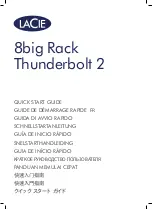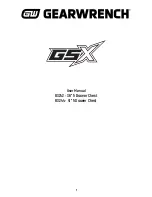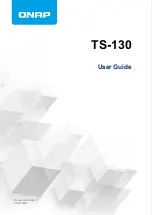
Cruzer Enterprise USB Drive
User Guide
Revision
1.0
5.
Frequently Asked Questions (FAQs)
What does “management ready” mean?
The
Cruzer Enterprise USB Drive can be readily managed using the Cruzer Enterprise CMC, a software
based interface that provides corporate networks with security against internal threats and loss of corporate
sensitive data, while securing data residing on corporate issued Cruzer Enterprise USB Drives.
Is the Cruzer Enterprise USB Drive performance reduced by the fact that all data written to it is
encrypted in hardware?
No. Not only is the performance unaffected by encryption, the Cruzer Enterprise USB Drive is one of the
fastest USB drives on the market, reaching the highest read/write speeds when plugged into a USB 2.0 port.
Why is hardware-based encryption more secure?
Software based encryption is subject to hacking. Even if strong encryption algorithms are used, such as
public-key encryption, there is a big problem of key management. The software needs to be able to access,
for example, a private key. Software and hardware debuggers can monitor the software and capture the
private key for rogue use.
Hardware based encryption stores keys internally on the device in a region that is not accessible to the
outside world.
Does the Cruzer Enterprise USB Drive operate on computers without administrative rights?
Cruzer Enterprise USB Drive data security (that is, encryption of the files that reside on it) is performed by
the Cruzer Enterprise Drive hardware and therefore does not require administrative rights. Most of the
Cruzer Enterprise auxiliary software security features can operate in user mode. Should special rights be
required, the Cruzer Enterprise USB Drive alerts the user.
Is there any type of anti-virus protection on my Cruzer Enterprise USB Drive?
Although SanDisk offers a Cruzer Enterprise USB Drive with an optional on-board anti-virus plug-in,
powered by McAfee, this device does not include the anti-virus plug-in. You can scan your device using
your anti-virus software installed on your computer.
What happens if I forget the device password?
There is no way to recover a forgotten password. If you have previously entered a password hint, then the
hint may help you to remember the password. If not, the only alternative is to select “Forgot Password” on
the logon window before the preset maximum number of failed password attempts is reached. You can
choose a new password to access the device, however, all data in the user-accessible removable partition will
be erased. If the maximum number of failed password attempts is reached, the device is locked and no
further access is possible. This is an important security feature, protecting data in lost devices from brute
force hacking attempts.
If the device is managed by the Cruzer Enterprise CMC and the device is inserted into an online computer,
the device can be unlocked remotely by the System Administrator even if the device has been locked after
maximum failed password attempts. The user must then choose a new password. Existing data on the
removable partition will be preserved.
If the device is managed but in an offline computer, the System Administrator can send the user a one-time
unlock code. The user must enter the code then choose a new password. Existing data on the removable
partition will be preserved in this case as well.
Why doesn’t anything happen when I insert my Cruzer Enterprise USB Drive into my corporate
computer?
Your company may have a security policy that prohibits modifying registry keys. Your System
Administrator may need to change permissions in the registry keys to allow full control for all users that will
be authorized to insert the Cruzer Enterprise USB Drive.
© 2007 SanDisk® Corporation
17
May, 2007 Document No. UG-CRE-0507-14


































